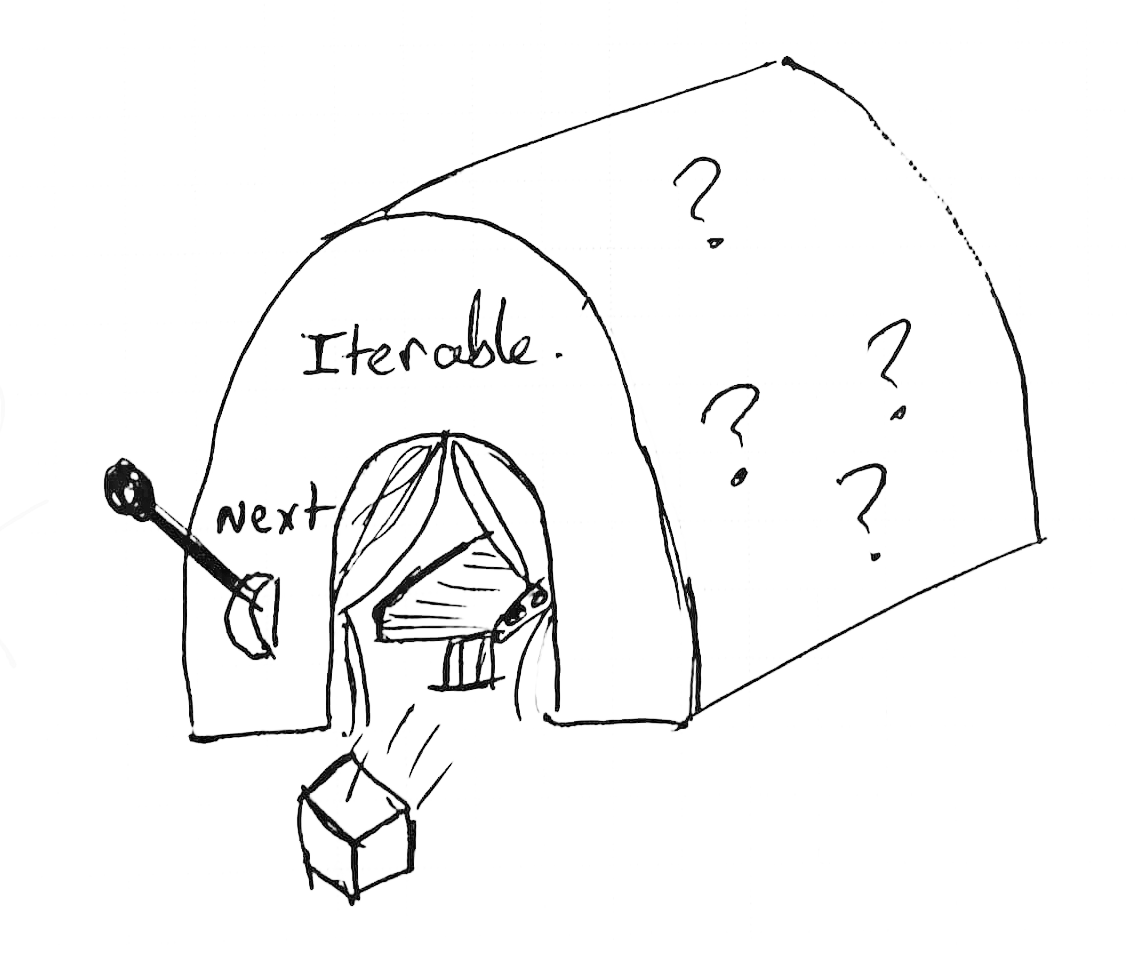Lecture 18
More on booleans and iterables
MCS 260 Fall 2020
Emily Dumas
Reminders
None
None is the only value of type NoneType. It represents the absence of a value, in cases where some value is needed.
E.g. None is the return value of a function that doesn't have a return statement.
>>> def f(x):
... "Do nothing"
...
>>> f(1) == None
True
bool()
The built-in function bool(x) converts a value x to a boolean, i.e. to either True or False.
How? A few values convert to False (are "falsy"):
- False
- None
- Zero in any numeric type (0, 0.0, 0j)
- Empty containers, i.e. (), [], "", {}, range(0)
Anything else converts to True, i.e. is "truthy" (unless you use an advanced technique to override this).
Automatic bool conversion
Python implicitly applies bool() to any value appearing where a boolean is expected, i.e. after if, elif, or while, or as operand of not, or, and.
>>> x = 5
>>> while x: # not recommended; `while x!=0` is better.
... print(x,end=" ")
... x = x - 1
...
5 4 3 2 1 >>>
if not username:
# Handle empty username
print("The username must not be empty.")
continue
Sequences and iterables
Reminder: Sequence is an ordered collection that can be accessed by integer index, e.g. tuple, list, string.

Sequences and iterables
Reminder: Iterable is a collection that can return items one by one upon request, e.g. range(), dict, dict_keys, ...

zip
You have a list
xcoords = [1,2,7,0,2]
ycoords = [5,5,-1,0,1]
[ (1,5), (2,5), (7,-1), (0,0), (2,1) ]
?
Could use indexing and a for loop or comprehension, e.g.
>>> [ (xcoords[i], ycoords[i]) for i in range(len(xcoords)) ]
[(1, 5), (2, 5), (7, -1), (0, 0), (2, 1)]
But remember range(len()) usually means there is a better way?
zip(A,B,C,...) takes a bunch of iterables and returns tuples of values until one iterable is exhausted.
>>> zip(xcoords,ycoords)
<zip object at 0x7f51a3e36dc0>
>>> list(zip(xcoords,ycoords))
[(1, 5), (2, 5), (7, -1), (0, 0), (2, 1)]
Note zip() returns an iterable that we can convert to a list if needed.
zip() is most often used in loops
cols = ["name", "quiz 1", "quiz 2"]
vals = ["Anne Example", "82.5", "95.0"]
for column,value in zip(cols,vals):
print("Found value {} in column {}".format(value,column))
Exercise: Given the list
[ 4, 8, 15, 16, 23 42 ]
>>> for a,b in adjacent_pairs( [ 4, 8, 15, 16, 23, 42 ] ):
... print("Pair: {} and {}".format(a,b))
...
Pair: 4 and 8
Pair: 8 and 15
Pair: 15 and 16
Pair: 16 and 23
Pair: 23 and 42
def adjacent_pairs(L):
return zip(L,L[1:])
Any & all
The functions any(L) and all(L) convert an iterable L into a single boolean.
any(L) returns True if at least one item from L is truthy. It returns as soon as it finds a truthy value. It is like a chain of or.
all(L) returns True if all items from L are truthy. It returns as soon as it finds a falsy value. It is like a chain of and.
Example: Check whether all characters in a string satisfy a condition.
left_keys = "qwertasdfgzxcvb"
def is_left_hand(word):
"Can `word` be typed with only left hand on en-us keyboard?"
return all( [c in left_keys for c in word] )
Example: Check whether a list of numbers contains at least one positive number.
def contains_a_positive(L):
"Does `L` contain an element greater than zero?"
return any( [x>0 for x in L] )
References
Revision history
- 2020-10-04 Correction about early return from all()
- 2020-10-03 Initial publication